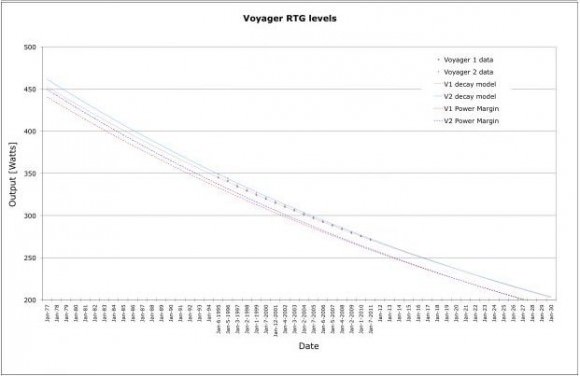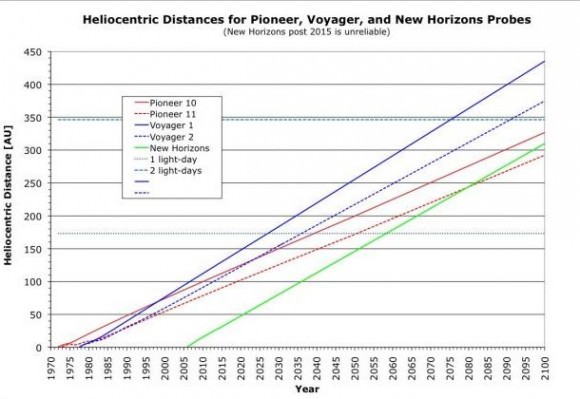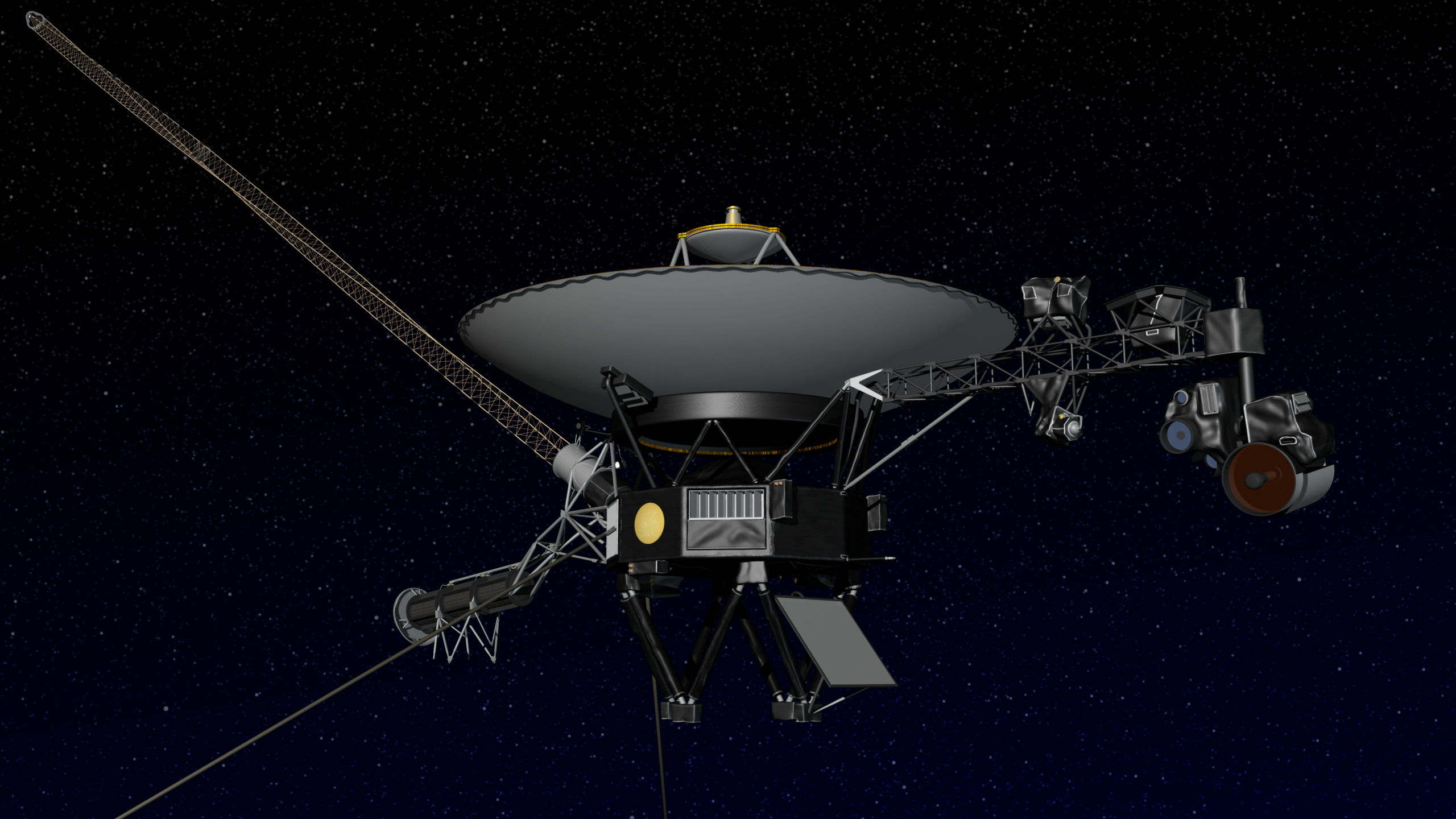[/caption]
Every mechanic loves to tinker with a machine to give it optimum operating efficiency. But this latest engineering feat involving the Voyager 2 spacecraft wins the prize for longest distance tune-up. Akin to servicing an old car to increase gas mileage, engineers at JPL sent commands across 14 billion kilometers (9 billion miles) out to Voyager 2, enabling it to switch to the backup set of thrusters that controls the roll of the spacecraft. This will reduce the amount of power that the 34-year-old probe needs to operate, giving it better “gas mileage” and — hopefully — the power to operate for at least another decade.
The move was a little risky, as these backup roll thrusters were previously unused. It meant trusting equipment which has been idle and out in the harsh environment of space for 32 years to work — and keep working for the remainder of the mission.
“The switchover is pretty permanent – the thrusters are not rated to be reused after being unheated,” said the @NASAVoyager2 Twitter feed.
Voyager 2 will save about 11.8 watts of electric power by turning off the heater that kept the hydrazine fuel to the primary thrusters warm.
Voyager 1 and 2 are each equipped with six sets, or pairs, of thrusters to control the pitch, yaw and roll motions of the spacecraft. With this latest command, both spacecraft are now using all three sets of their backup thrusters.
The primary roll thrusters now turned off fired more than 318,000 times. Voyager 1 changed to the backup for this same component after 353,000 pulses in 2004.

The rate of energy generated by Voyager 2’s Plutonium 238 nuclear power source continues to decline, and is now down to about 270 watts from the 470 watts being produced when the spacecraft launched in 1977. But now, by reducing its power requirements, engineers expect the spacecraft can continue to operate a bit longer.
Still, at the rate of decay, the Voyager spacecraft won’t have sufficient electric power to its instruments sometime by the mid-2020’s.
Using solar power for a spacecraft traveling beyond Jupiter is impractical, (which is why it is important that Congress pass a bill to restore funding for production of Plutonium 238).

The Voyagers are on their way toward interstellar space, beyond our solar system, where no human spacecraft has been before. This latest tune-up will hopefully get Voyager 2 a little farther while she’s still able to communicate with Earth.


Going, going… and going!
one day humans will be flying alongside it in space ships as a tourist attraction. shame i wont be alive to see the most expensive antique in the known universe.
Great to hear these craft are still performing well after all these years. It does make you wonder how early 70s electronics can still function perfectly whilst a modern planetary probe is currently stuck in orbit. Fingers crossed that they can get Phobos on its way soon.
The much larger sizes of old components is that makes them both power hungry and sturdy. You have higher voltage swings to connote binary logic states (0’s and 1’s).
But you also have thicker gate oxides that won’t break down from radiation damage as fast. Or, as I suspect, the radiation hardened processes then used JFET’s to get around MOS damage altogether.
Today “radiation hardened” mostly means burn in to pick the high quality chips I think, perhaps with some costly silicon-on-oxide devices if there is time and money. Space electronics isn’t what it used to be in that regard, still exceedingly good engineering but not turning a whole nations resources towards getting “the right stuff”.
But MP has an interesting comment on the balance between long life on components (high voltage constructs) and long life on systems (low voltage constructs). Seems today’s engineering hits the better optima.
10/10
Designed by true love for engineering and put together by masters for the passion of exploration into the unknown and transmit back wonders never seen before. Time for NASA to get that spirit back and put the fascination back into the sciences. NASA is the catalyst why I went into engineering and many others I assume the same reason. If only we had 1.8V processes at the time it was launched then that power source would last into the Kupier Belt and send back wonders our present day scopes and probes can’t see or detect. It’s a great distraction from today’s ills. Reminds me of the energizer bunny and they just keep going.
I think you made a typo between Kuiper Belt (~ 30 – 50 au and Oort cloud (~ 2 000 – 50 000 au.
It would take Voyager 1 around 500 years at the current speed of 3.6 au/year to get to the Oort cloud.
The output of the RTG would then be (if I use the power source half-life of ~ 60 years instead of Pu-238 ~ 90 years; probably thermocouple degradation) ~ 10^-4 W.
Maybe if we push it to 0.18 V processes?
The perfect space probe! Must be a great feeling to have worked on these spacecraft with your own hands and watch it make history every second, even 30 years later.. kudos to the Voyager team.
I read a long time ago that the voyagers have less computing power on board than a 1980s Amstrad CP/M word processor. @Buddy it may not be as good as a fly past but If you want a personal feel for their situation, download Celestia ( a free space simulation) then get the Voyager spaceraft add-ons from the Celestia motherload web site. Go to the voyagers and look back at Sol, it sends a shiver down the spine. You can also wind back time to the launch date, accelerate it forward and follow the spacecraft on their original journeys through the solar system.
newSteveZ., Thanks for that tip. I did as you suggested, then wrote an article for the newsletter of my EAA chapter. If you ever get to Wichita, look me up and I’ll give you a free trike flight.
Glad you enjoyed it. Not quite sure what a trike flight is, I have flown on a Harley trike but I don’t want to repeat that. I’ve been up in a microlight and that was great but I need a transatlantic aircraft to take up your kind offer.
There is a saying, “If it ain’t broke, don’t fix it”. I hope they won’t be sorry.
I can’t tell you how much I hate it when people say that. It’s basically a way of saying “Why try something new when old stuff still works?” If we actually took that to heart, computers would still take up entire rooms, or even not have been invented at all. No, it’s better to say “if it ain’t broke, make it better”, and they did just that.
Voyager 2 is now at 96.87 AU — 8998 million miles.